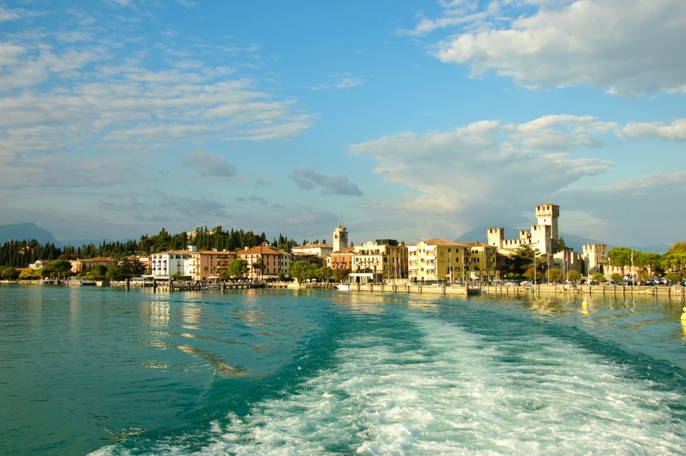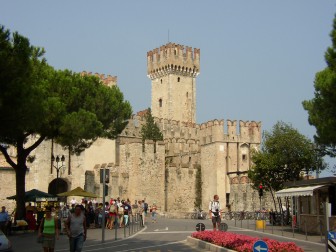
The Brescian side of the lake begins at Sirmione which has been famous since ancient times for its health-giving spa water. The peninsula on which it stands sticks out into the water about 4 km and is one of the most enchanting places on the lake. In Roman times villas were built there including that of the poet Catullus who wrote of the beauty of the lake in his verses.

Nature and history: Sirmione is full of art treasures and history starting with the Scaliger Castle through which one must pass to reach the town centre.
The town itself is closed to private traffic (except for hotel guests) but a shuttle takes the visitor to the end of the peninsula, the Grotte di Catullo, starting off from the square outside the spa (see “Spas and health”) , surrounded with a big park and famous throughout Europe for its cure for rhinogenous deafness.
Scaliger Castle was built in the 13th century by Mastino I della Scala, lord of Verona, as a berth for the Scaliger fleet.
It has a large dock and the surrounding walls cut the town off from direct contact with the mainland. Completely surrounded by water, the Castle is a miniature architectural jewel of towers, courtyards and a drawbridge.
After passing the Castle, the visitor enters the narrow lanes and small squares of the town itself lined with boutiques, antique shops, bars and restaurants and from there continues past the spa to the Grotte di Catullo on the tip of the peninsula, where there are the remains of a big Roman villa. It was built in early Imperial times and is the largest Roman villa uncovered in north Italy measuring 167 by 105 m.
The many finds it has yielded are kept in an Antiquary.
The most recent theory proposes that the villa may have been where the Roman Emperors, on their journeys around the northern provinces, met the most important political, civil and military leaders of the day.
Sirmione also boasts interesting churches such as the 15th century Santa Maria Maggiore and San Pietro in Mavino, the oldest church in the town (8th century).
The historic hills
The hills that ring Sirmione and Desenzano were the scene of the 1859 battles of Solferino and San Martino which were the most decisive of the Italian Risorgimento.
At San Martino there is a round tower (65 m), erected in 1893, with seven frescoed rooms built on top of one another, a Museum and a Ossuary. Each year the battle of 24 June 1859 is remembered with a celebration in costume.
Solferino fort is older, built in 11th century and rebuilt in the 17th, where the Museum and the Ossuary can be visited near the International Red Cross memorial which was built in 1959 using marbles coming from all over the world to celebrate the 100th anniversary of the organisation.
Photo: photoverulam, -JvL-
